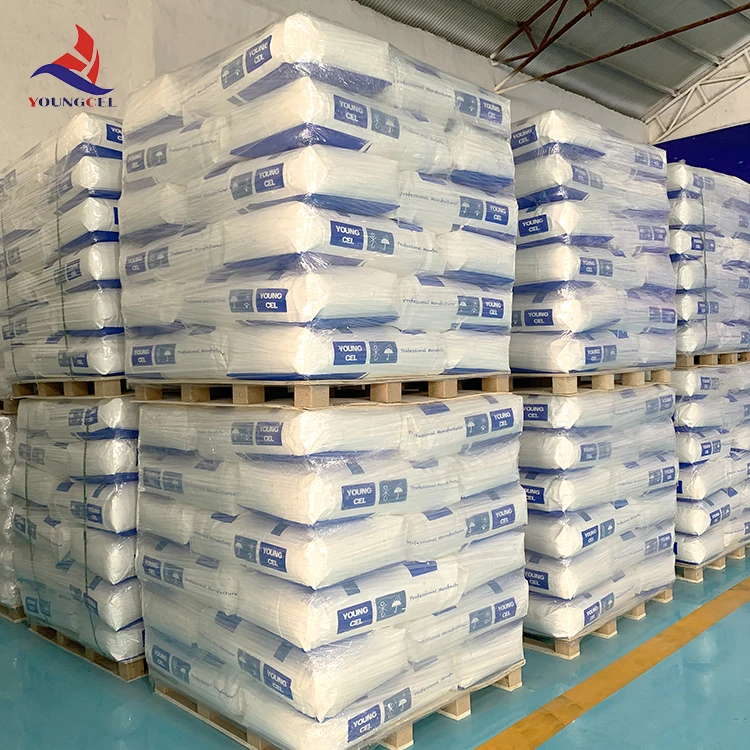The Significance of Paint HPMC in Modern Coatings
In the world of coatings and paints, the incorporation of additives has become essential to enhance performance and durability. One such vital additive is Hydroxypropyl Methylcellulose (HPMC), which has gained considerable traction in the paint industry due to its multifaceted benefits. Originating from cellulose, a natural polymer, HPMC is a modified cellulose compound that shows remarkable versatility in various applications, especially in paint formulations. This article explores the significance of HPMC in paint production, detailing its properties, benefits, and the potential it holds for the future.
Properties of HPMC
HPMC is a non-ionic cellulose ether, characterized by its ability to form a gel-like substance in water. This feature is crucial in paint formulations, as it aids in controlling viscosity and improving texture. HPMC is also known for its excellent water retention properties, which help in the smooth application of paints and contribute to the uniform drying of coatings. Additionally, HPMC enhances the stability of paint emulsions, preventing separation of components and ensuring a consistent quality throughout the product’s shelf life.
Benefits of HPMC in Paints
1. Improved Workability and Open Time One of the primary benefits of incorporating HPMC into paint formulations is the improved workability it provides. By enhancing the viscosity of a paint, HPMC ensures that it can be applied smoothly without running or sagging. Furthermore, HPMC increases the open time, which refers to the duration that paint remains workable after application. This is particularly important for large projects or when working in unfavorable conditions, allowing painters to achieve better results.
2. Enhanced Durability The inclusion of HPMC in paint formulations contributes significantly to the durability of the final product. It enhances adhesion to surfaces, thus promoting better resistance against peeling and flaking over time. Additionally, HPMC can improve the paint’s resistance to environmental factors such as moisture and UV radiation, leading to longer-lasting finishes.
paint hpmc

3. Eco-friendliness As the world shifts towards more sustainable practices, HPMC stands out as an environmentally friendly option. Being derived from natural cellulose sources, HPMC is biodegradable and non-toxic, making it suitable for use in eco-friendly paints. Manufacturers are increasingly seeking to develop low-VOC (volatile organic compound) coatings, and HPMC plays a pivotal role in achieving this goal.
4. Versatility in Formulations HPMC’s adaptability allows it to be utilized in various types of paints, including water-based, solvent-based, and even specialty coatings. Whether used in emulsions, dispersions, or suspensions, HPMC can enhance performance, making it an invaluable ingredient for manufacturing diverse paint products.
Future Trends and Applications
The paint industry is witnessing a progressive shift towards innovation and sustainability, and HPMC is poised to contribute to this evolution. Research and development are continually exploring new formulations that leverage the unique properties of HPMC to create advanced coatings with superior performance characteristics. For instance, the incorporation of HPMC in smart coatings—those that respond to environmental changes—could pave the way for groundbreaking applications in protective coatings and aesthetic finishes.
Moreover, the demand for eco-friendly and sustainable products is on the rise, and HPMC will likely play a crucial role in meeting these market needs. As consumers become more conscious of their environmental impact, manufacturers focusing on sustainable practices are expected to increasingly adopt HPMC-laden formulations in their products.
Conclusion
The significance of Hydroxypropyl Methylcellulose (HPMC) in the paint industry cannot be overstated. Its unique properties and benefits make it an essential additive for enhancing the performance, durability, and sustainability of modern paints. As the industry continues to evolve, HPMC will undoubtedly remain at the forefront of innovation, contributing to the creation of high-quality, eco-friendly coatings that meet the demands of an ever-changing market. With ongoing research and development, the future of paint formulations incorporating HPMC looks promising, paving the way for superior applications in the coatings sector.
-
Rdp Powder: Key Considerations for Wholesalers in the Building Materials IndustryNewsJul.08,2025
-
Key Considerations for Wholesalers: Navigating the World of Hpmc - Based ProductsNewsJul.08,2025
-
Hpmc Detergent: Key Considerations for WholesalersNewsJul.08,2025
-
Key Considerations for Wholesalers: China Hpmc For Tile Adhesive, Coating Additives, Concrete Additives, and MoreNewsJul.08,2025
-
Crucial Considerations for Wholesalers: Navigating the World of Construction MaterialsNewsJul.08,2025
-
Key Considerations for Wholesalers Sourcing Additive For Cement, Additive For Concrete, Additive For Putty from Additive Manufacturer Shijiazhuang Gaocheng District Yongfeng Cellulose Co., Ltd.NewsJul.08,2025




